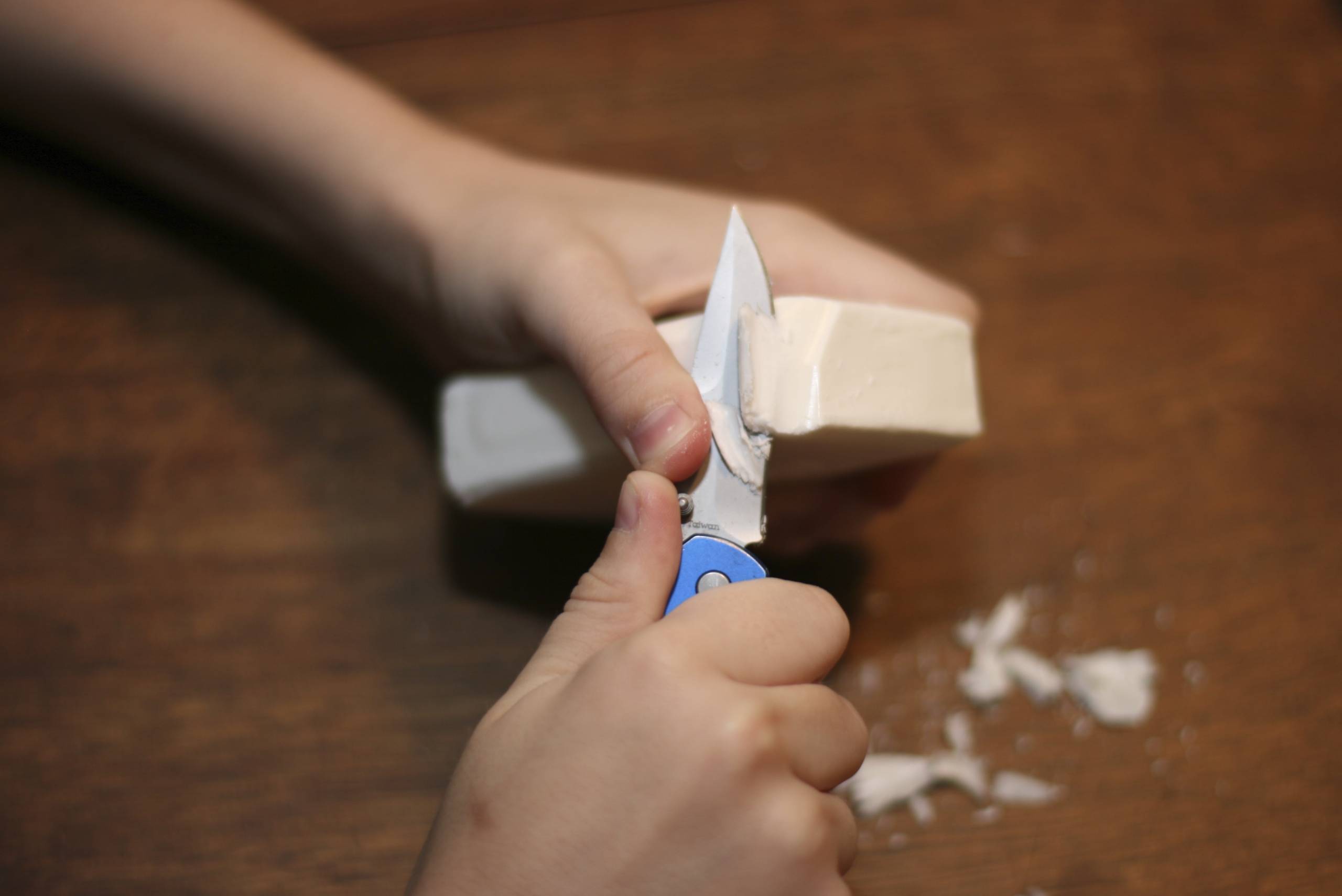Carve & Feel: Emotional Trace Expression Kit

Summary
This is a small kit for expressing emotions through marks—you can carve, scratch, press, or draw using anything like soap, an eraser, paper, or even just a pen. No words are needed; let the marks speak for you.
Before You Start (about 10 seconds)
If needed, open the large-print instructions or the audio guide link included in the kit so you can follow along comfortably.
Steps:
- Gather Your Tools and Materials(about 1 minute)
Choose one tool you like (pen, key, toothpick, eraser, blunt scissors, carving knife, etc.)
and one material to mark on (soap, eraser block, cardboard, foam board, cork, rubber pad, etc.).
- Warm-Up Test Marks (about 1 minute)
Make one or two light lines on the material to feel its softness, resistance, and how the tool moves.
Switch if it doesn’t feel right.
- Optional: Sketch a Light Draft (about 2 minutes)
If you’re unsure where to begin, lightly draw a few lines or simple shapes with a pen as a rough guide;
or skip this and start carving right away.
- Start Mark-Making (Express Your Emotion) (about 8 minutes)
Let your hand follow your mood:
Press hard or soft, move quickly or slowly, be neat or messy.
It doesn’t have to look “good.” Your marks are your feelings.
- If You Need Direction: Open the Simple Doodle Reference Link (about 1 minute)
Pick a simple outline from the reference link in the kit and follow it loosely to help you begin.
- Look at What You Made (about 3 minutes)
Observe:Which lines are deep? Which are light? Where is it steady or chaotic?Just notice. No judgment.
- Optional: Write One Short Reflection (about 1–2 minutes)
Jot down a small note about your experience, or skip this step if you prefer.
- Wrap Up (about 1 minute)
Put the tools back in the kit.
Keep your piece or throw it away — either choice is fine.
You’ve completed a 20-minute emotional mark-making session.
<a href=”the URL in blogs.ed.ac.uk/opentoolkits/URL”>Carve & Feel: Emotional Trace Expression Kit</a> © 2025 by <a href=”https://example.com”>ZIYI ZHOU</a> is licensed under <a href=”https://creativecommons.org/licenses/by/4.0/”>CC BY 4.0</a><img src=”https://mirrors.creativecommons.org/presskit/icons/cc.svg” alt=”” style=”max-width: 1em;max-height:1em;margin-left: .2em;”><img src=”https://mirrors.creativecommons.org/presskit/icons/by.svg” alt=”” style=”max-width: 1em;max-height:1em;margin-left: .2em;”>


